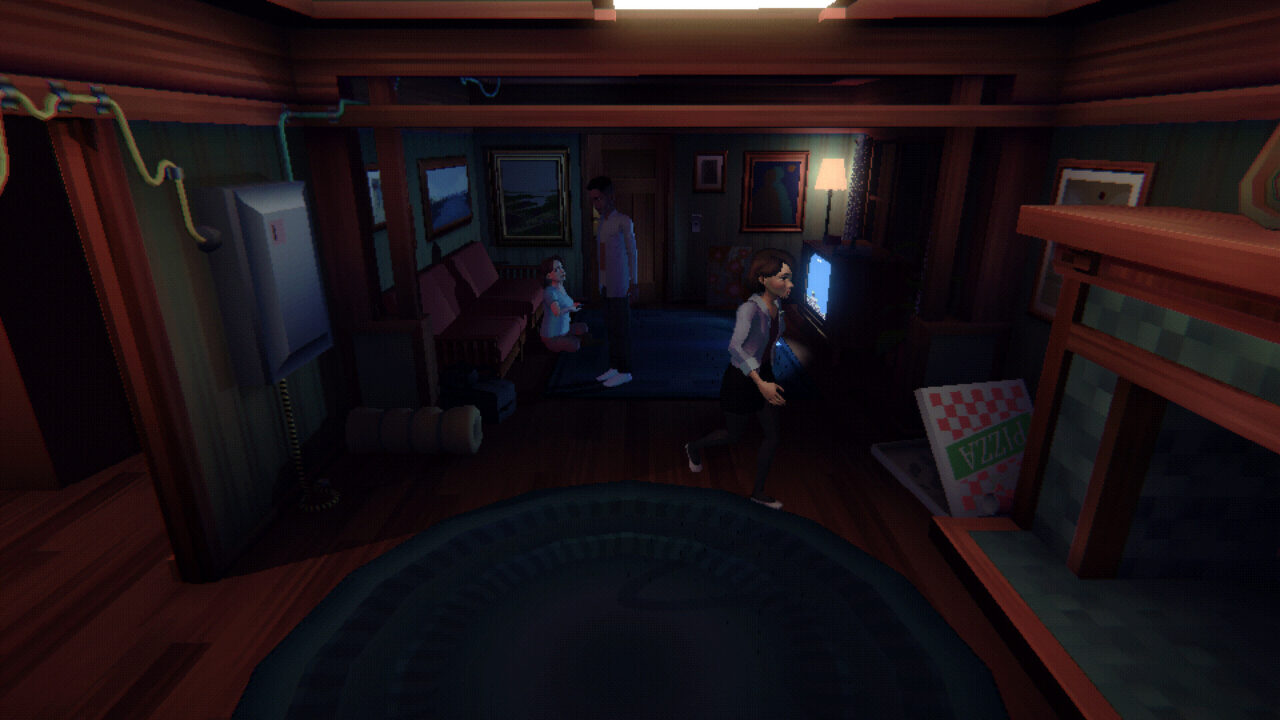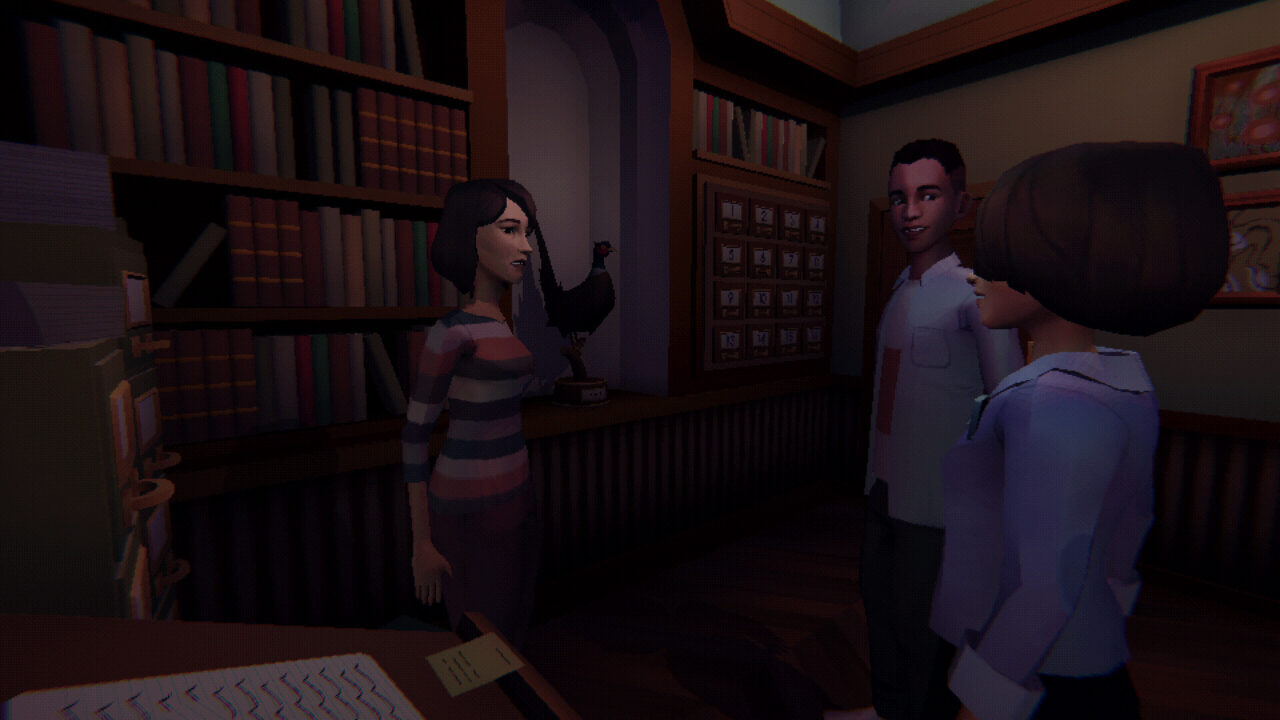Homebody: The Time Loop Slasher Game Out to Hurt You In Unexpected Ways

I like the Happy Death Day films concept of time loop horror, but there was something a little too light about it. A little too straightforward and shallow. Understandable given its roots were in comedy as much as horror, and not necessarily a bad thing for that film. I just craved something a little more out there.
Homebody has been scratching that particular itch for me recently. Game Grumps (Who created the very different Dream Daddy last time out) backed the vision of Jory Griffis for a similar twist on the slasher genre to Christopher Landon’s hit film but structured like a 90s survival horror puzzler. It’s no mistake that references to games like The 7th Guest are in here, solving puzzles is survival and survival is a puzzle.
The story sees a group of college friends reunite at an isolated rented house so they can view the Perseid meteor shower. The group has known each other for years, but as they entered their twenties, fractures have been created in a previously tight-knit group. We play the story through Emily, who is already running late for the reunion when we join her. The game is quick to get across that Emily is not in an especially good place, and is full of worry and excitement about meeting up with everyone again. There’s not much time to get into it, however, as the power goes out and a masked killer arrives to slice and dice the young group. The house has hidden secrets that make escape less than straightforward. It’s fitted with a bizarre technology that leads to a seemingly unbreakable deadbolt on the only exit.
When Emily is eventually murdered by the killer, time resets to 7 pm that evening. Two hours before the power went out. As the only person armed with the knowledge of what will happen, Emily embarks on an investigation of the house and its strange secrets in order to figure out exactly what’s going on and how to escape it.

During our time with the group, their various emotional and physical wounds are exposed as the night that won’t end draws out more and more revelation and discovery. We get flashbacks/dream sequences of the group at various points in their recent past alongside mysterious visions that offer guidance on the situation.
Having these personal dramas and traumas unfurl beside the mysteries of the house, the time loop, and the killer really adds to the investment in the story and pushes you on to figure out the puzzles that lead to an increasingly odd night.
Every loop, Emily can learn something crucial, and these moments are collected in a virtual scrapbook. At first, there’s no clear connection but exploration and conversation will begin to connect the dots, and helpfully that gets reflected in the scrapbook. It really is a pleasing throwback to the age of ambiguous puzzle adventures that don’t nudge you every few seconds to make sure you’ve got the right answers. There’s a bit of balance to adapt for a modern audience, but it’s subtle and actually encourages you to experiment within a fairly rigid set of rules.
Then there’s the killer. The potential identity of this black-robed psycho is discussed, but it largely feels irrelevant. The sheer inevitability of the killer’s arrival becomes increasingly predictable, but that just makes the short time Emily has before that all the more crucial. Emily can’t stop the killer by force and cannot save her friends from their bloody fate, so it becomes a fact that Emily just needs to focus on anything but the killer and her friends.
Given the story implication of the group’s growing distance and Emily’s personal issues, it feels almost deliberate that she can avoid her friends and dive headlong into breaking the loop. She obviously wants to save them somehow, but the uncertainty of the outcome of all this clearly concerns her, and keeping busy seems to be her way of ignoring that gnawing feeling of the unknown.

That doesn’t mean the relationships are not worth getting invested in. Some conversation is helpful in order to find solutions (but not essential) and because these are old friends, there’s very little straight-to-the-point talking, with asides, reminiscing, and personal dramas intertwining with those potentially vital nuggets of information.
As much as I wanted to know who the killer was and why the time loop existed, I was just as curious to discover what caused the alarmingly gentle rifts between this group of friends. Is it just the consequence of time and personal experience pulling them apart whether they like it or not? Big dramatic spats among fairweather friends would be easier to swallow, but it’s so much more chilling to see it as an unintentional growing apart that each person is slowly coming to realize.
You can check out more horror game editorials on DreadXP.
Categorized:Editorials
